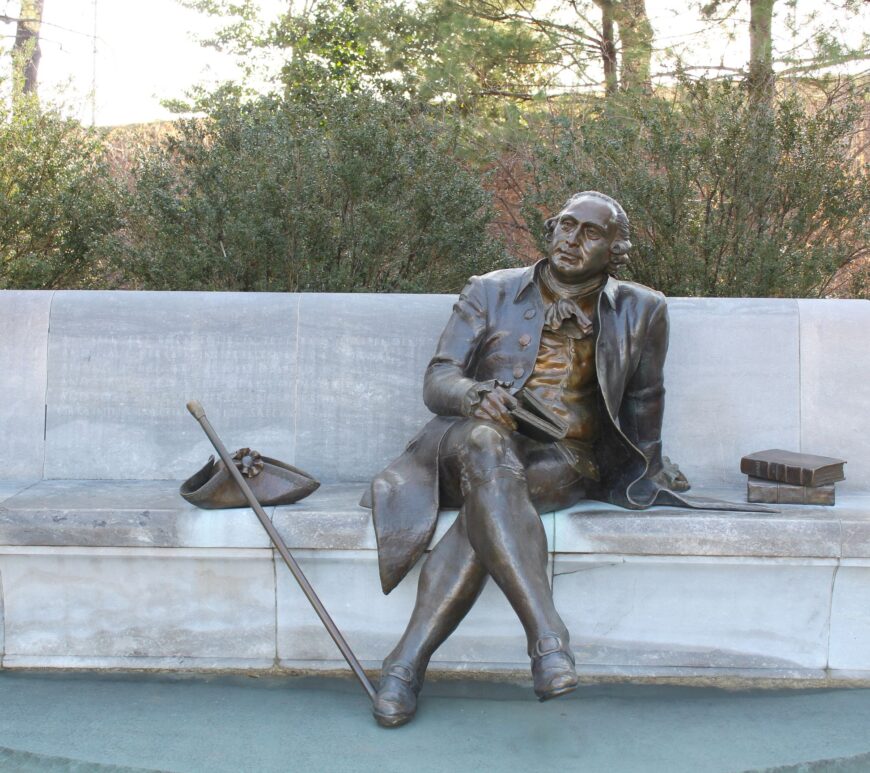
Category: Monumental History
All about the world’s often seen but overlooked monuments and landmarks


History of the Chilean 1981 $50 featuring Arturo Prat

Commodore John Barry
“The Father of the American Navy”
Franklin Square, situated between K St, I St, 13th St, and 14th St, sees no end of vehicle or pedestrian traffic throughout the day. Food trucks line the eastern end of the park at lunch time while workers from the nearby office buildings enjoy lunch around the park’s broken fountain. On the western edge, overlooking 14th St’s never-ending stream of traffic, is the largely forgotten father of the United States Navy.


Peace Monument
“A good Navy is not a provocation to war. It is the surest guaranty of peace.”
Standing in a lonely traffic circle west of the U.S. Capitol building is a memorial that has come to be called the Peace Monument. Most of the visitors it receives have come to see the Ulysses S. Grant Memorial, and few know that it stands in honor of the naval war dead of the American Civil War.


Thomas Jefferson Memorial
“The care of human life and happiness, and not their destruction, is the first and only legitimate object of good government.”
South of the White House, on land that was reclaimed from the Potomac River in the late 19th century, stands the memorial to Thomas Jefferson. It doesn’t have good parking and it can be tricky to walk to on foot, but the Jefferson Memorial remains one of the most popular monuments in D.C.


General José de San Martín
“Let us be free, the rest matters not.”
In the corner of the intersection of Virginia Ave. and 20th St. stands the equestrian statue of one of South America’s greatest leaders. In between the Office of Personnel Management and the State Department, the statue sees thousands pass by it daily, but the legacy of General José de San Martín has been largely forgotten in North America.


Francis Scott Key Park
“Does not such a country, and such defenders of their country, deserve a song?”
At the western end of M St. overlooking the Potomac River is a small park that’s well-traveled by locals and Georgetown University students, but under-visited by the tourists that come to the District. Many know the name of Francis Scott Key, but few know the story behind the man or his memorial.


Equestrian Statues
“Equestrian statues have always served, through the centuries, a kind of epic purpose.”
Although Washington, D.C., is a city known for its statuary, the most compelling – and the most admired – are the statues of a horse and its rider. There are over 20 such statues in the District (more than any other American city) and they represent not just Americans, but foreigners and even ideals.


George Mason Memorial
“We came equals into this world, and equals shall we go out of it.”
Southwest of the Thomas Jefferson Memorial, at the northern edge of East Potomac Park, lies one of the most underseen memorials in Washington, honoring one of the least known founders of our country. Thousands pass by it daily on Interstate 395, but few stop to regard George Mason or contemplate his contributions to the country.


Columbus Memorial Fountain
“His discovery was a blunder; his blunder was a new world; the New World is his monument!”
Union Station is the primary transportation hub in Washington, D.C. Thousands pass through it daily but few stop to appreciate the impressive fountain that sits outside its entrance honoring Christopher Columbus and his contributions to the colonization of the American continents.
